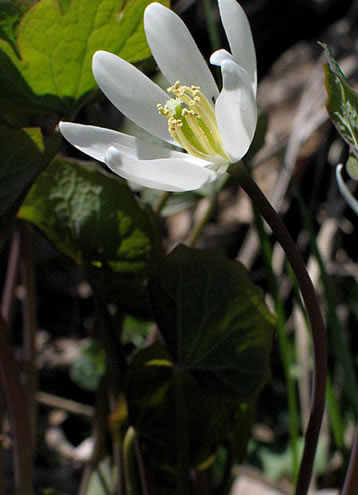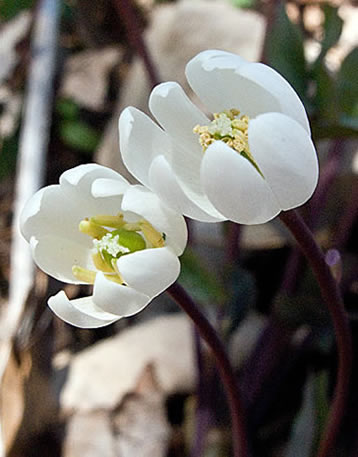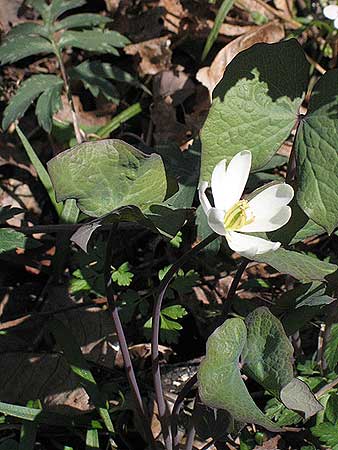From
History and Description.—This plant is found from New York to Maryland and Virginia, and in many parts of the western states, growing in limestone soil, in woods and near streams and rivers, and flowering in April and May. The part used is a thick, knotty rhizome, from which long, fibrous roots proceed, and is of a brownish-yellow color. It is used as an adulterant of hydrastis, and is often artfully mixed therewith. In cases that have come under our observation, this root has been chopped so as to bring it to about the size of hydrastis. In other instances it has been matted together inside of bunches of hydrastis, and in still others the rootlets have been removed, chopped, and mixed with hydrastis. The epidermis is somewhat corrugated, and in some specimens transversely cracked. The bark is resinous, and contains the active principle of the roots. The central portion is ligneous, of a light straw color, and is easily separated by bruising the root. The root has an odor similar to that of podophyllum, and a bitter, mucilaginous taste at first, followed, by a pungent, nauseous, and acrid taste. Water or alcohol extracts its virtues.


 Twinleaf
Twinleaf